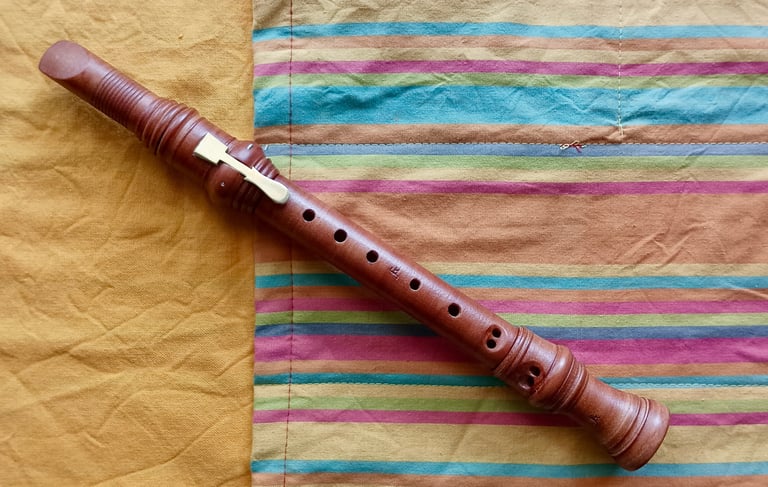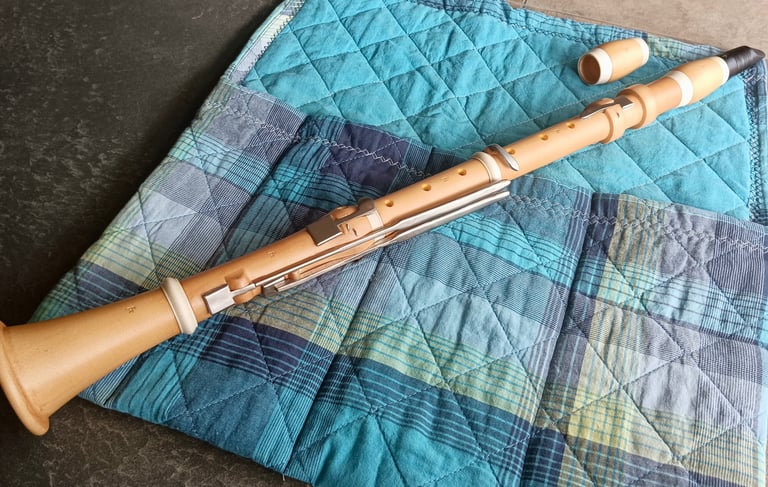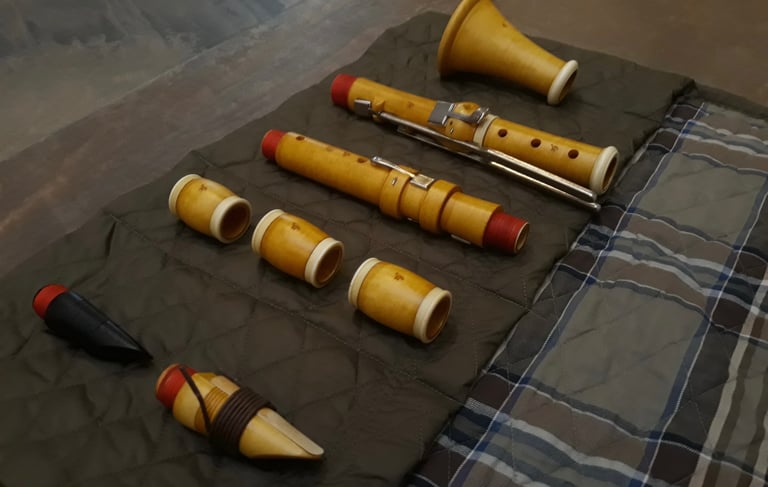Chalumeaux & Clarinets
J. C. Denner Chalumeau
The chalumeau, which first appeared in France at the beginning of the 17th century and later spread to Germany, reached its definitive form around 1700, thanks to Johann Christoph Denner, who likely added its characteristic two keys, placed diametrically opposite each other. Thanks to these improvements, the chalumeau gained popularity both as a solo instrument and in orchestral settings, finding its place in works by composers such as Vivaldi, Telemann, Fux, and Hasse.
We offer soprano, alto, and tenor chalumeaux, modeled after an original by Denner himself, preserved in the Bayerisches Nationalmuseum (Mu 136). The bore and mouthpiece of our instruments have been carefully optimized for reliable performance at A=415 Hz.
In keeping with historical practice, the mouthpiece can be positioned either reed-up or reed-down, allowing players to choose their preferred setup.


H. Grenser Classical Clarinet in Bb
As historical performance practice became standard in the symphonic repertoire of the Classical era, including works by Haydn, Mozart, and Beethoven, clarinets after Heinrich Grenser (Dresden) became the preferred choice among professional players.
Our instrument is based on a Grenser clarinet from around 1800, preserved in the Bate Collection (No. 432). It has been reconstructed from a 2D technical drawing, with select details drawn from other period originals. Scaled to A=430 Hz, it aligns with the standard pitch for Classical-era performance.
It is available in two models: a 5-key (standard) and a 6-key (with C#/G# key) version.


J.-J. Baumann Classical Clarinet in C
Our Clarinet in C is modeled after an instrument by the renowned French maker Jean-Jacques Baumann (1772–1845), made before 1830 and preserved in the Bate Collection, Oxford (No. 40). Reconstructed using a 2D technical drawing, it is designed for performers who require a Clarinet in C for symphonic repertoire.
We offer two pitch options: at A=430 Hz (the standard pitch for Classical repertoire) and at A=415 Hz (for use in lower-pitched ensembles).
As for our Grenser Classical Clarinet in B, two key configurations are available: the standard 5-key and a 6-key one (with the added C♯/G♯ key).


